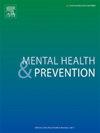社会和经济不平等在形成反社会人格特征中的作用。
IF 2.4
Q2 Medicine
引用次数: 0
摘要
目的:探讨反社会人格障碍(ASPD)特征发展的生态学。方法:采用混合效应模型研究性别、年龄、童年不当行为、抑郁症状、父母教养方式、社会经济地位、社会不平等和经济不平等对反社会人格障碍特征的影响。个人层面的数据来自国际约会暴力数据库(n = 14,136;平均年龄= 20.49,SD = 1.70),其中男性4167人(平均年龄= 20.67,SD = 1.71),女性9969人(平均年龄= 20.42,SD = 1.70)。宏观层面的不平等数据来自民主多样性数据库。结果:反社会人格障碍特征在男孩中更为普遍(b = - 0.14, p <;.001),并与儿童不当行为呈正相关(b = 0.19, p <;.001)、抑郁症状(b = 0.17, p <;.001),社会经济地位(b = 0.02, p <;.001),而与年龄呈负相关(b = -0.01, p <;.001)和积极教养(b = -0.15, p <;措施)。经济不平等程度越高,抑郁症状的影响越大(b = 0.04, p <;措施)。积极父母教养对男孩(b = 0.04, p = 0.013)和抑郁症状较轻的男孩(b = 0.06, p <;在社会平等(b = -0.03, p = .006)和经济不平等(b = 0.02, p = .031)的情况下更为明显。结论:研究结果强调了个体、家庭和社会因素在反社会障碍特征发展中的复杂相互作用。这些结果强调了促进积极的育儿实践和解决结构性不平等以减少反社会人格障碍特征的必要性。未来的研究应探索这些关联背后的机制,以指导有针对性的干预措施。本文章由计算机程序翻译,如有差异,请以英文原文为准。
The role of social and economic inequality in shaping antisocial personality traits.
Objective
: To test the ecology of the development of antisocial personality disorder traits (ASPD).
Methods
: A mixed-effects model was used to examine how sex, age, childhood misconduct, depressive symptoms, parenting practices, socioeconomic status, social inequality, and economic inequality predicted ASPD traits. Individual level data were sourced from the International Dating Violence database (n = 14,136; mean age = 20.49, SD = 1.70), which included 4,167 men (mean age = 20.67, SD = 1.71) and 9,969 women (mean age = 20.42, SD = 1.70). Macro-level inequality data were obtained from the Variety of Democracy database.
Results
: ASPD traits were more prevalent among boys (b = - 0.14, p < .001) and positively associated with childhood misconduct (b = 0.19, p < .001), depressive symptoms (b = 0.17, p < .001), and socioeconomic status (b = 0.02, p < .001), while negatively associated with age (b = -0.01, p < .001) and positive parenting (b = -0.15, p < .001). The impact of depressive symptoms increased when economic inequality was higher (b = 0.04, p < .001). The influence of positive parenting on ASPD traits was stronger for boys (b = 0.04, p = .013) and those with less depressive symptoms (b = 0.06, p < .001) and varied based on societal equality, being more pronounced in socially equal (b = -0.03, p = .006) but economically unequal (b = 0.02, p = .031) contexts.
Conclusion
: The findings highlight the complex interplay of individual, familial, and societal factors in developing ASPD traits. These results underscore the need to promote positive parenting practices and address structural inequalities to reduce ASPD traits. Future research should explore the mechanisms underlying these associations to guide targeted interventions.
求助全文
通过发布文献求助,成功后即可免费获取论文全文。
去求助
来源期刊

Mental Health and Prevention
Medicine-Psychiatry and Mental Health
CiteScore
2.10
自引率
0.00%
发文量
22
审稿时长
24 days
 求助内容:
求助内容: 应助结果提醒方式:
应助结果提醒方式:


